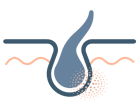Kubasch, A. S., & Meurer, M. (2017). Okulokutaner und okulärer Albinismus [Oculocutaneous and ocular albinism]. Der Hautarzt; Zeitschrift fur Dermatologie, Venerologie, und verwandte Gebiete, 68(11), 867–875. https://doi.org/10.1007/s00105-017-4061-x
Grønskov, K., Ek, J., & Brondum-Nielsen, K. (2007). Oculocutaneous albinism. Orphanet journal of rare diseases, 2, 43. https://doi.org/10.1186/1750-1172-2-43
Kamaraj, B., & Purohit, R. (2014). Mutational analysis of oculocutaneous albinism: a compact review. BioMed research international, 2014, 905472. https://doi.org/10.1155/2014/905472
Yang, Q., Yi, S., Li, M., Xie, B., Luo, J., Wang, J., Rong, X., Zhang, Q., Qin, Z., Hang, L., Feng, S., & Fan, X. (2019). Genetic analyses of oculocutaneous albinism types 1 and 2 with four novel mutations. BMC medical genetics, 20(1), 106. https://doi.org/10.1186/s12881-019-0842-7
Okulicz, J. F., Shah, R. S., Schwartz, R. A., & Janniger, C. K. (2003). Oculocutaneous albinism. Journal of the European Academy of Dermatology and Venereology : JEADV, 17(3), 251–256. https://doi.org/10.1046/j.1468-3083.2003.00767.x
Summers CG. Albinism: classification, clinical characteristics, and recent findings. Optom Vis Sci. 2009 Jun.
Goldberg, R. A., Lally, D. R., & Heier, J. S. (2015). Oculocutaneous albinism. JAMA ophthalmology, 133(3), e143518. https://doi.org/10.1001/jamaophthalmol.2014.3518





